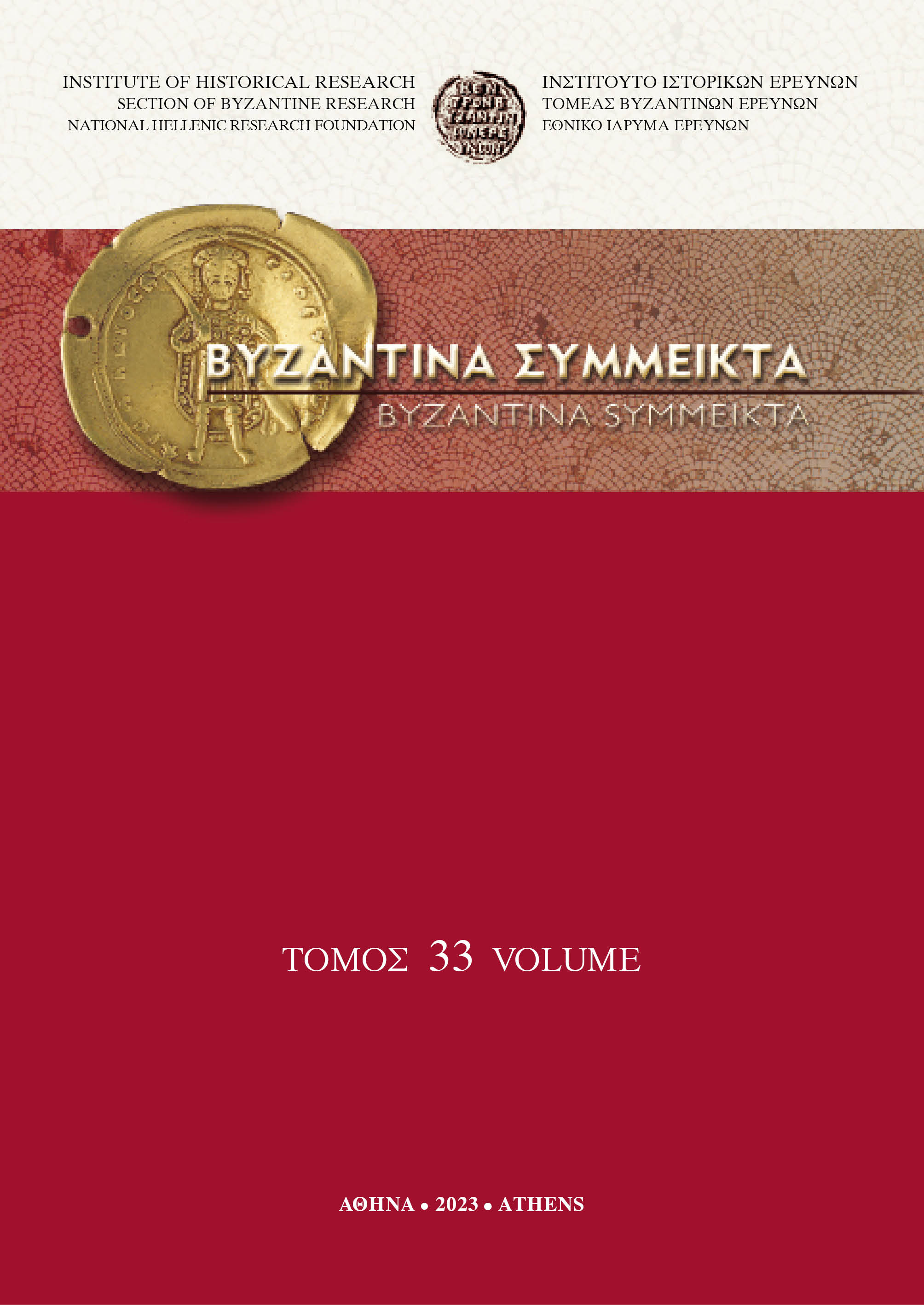Η Αγιότητα στην υπηρεσία της πολιτικής. Οι προπαγανδιστικές συνδηλώσεις της παράστασης του "Βουλγαροκτόνου" Αγίου Δημητρίου

Abstract
St. Demetrius, the patron saint of Thessaloniki through the ages, the myroblytos and miracle-worker, is the subject of an extremely rich iconography. In one scene the martyr is depicted on horseback, spearing or unhorsing Ioannitzes, a prominent Bulgarian king (1197-1207). The specific iconographical type was conceived during the 13th century in the frame of the byzantine counter-narrative against the second Bulgarian state’s founding ideology, in order to present the aforementioned ruler’s sudden death as one of Demetrius’ numerous miracles. The diffusion of this scene served multiple objectives of Michael VIII Palaiologos’ propaganda, given that St. Demetrius was considered as one of his personal patron saints, a policy which was followed and expanded by his son and successor, Andronicus II Palaiologos. This paper’s aims are to interpret the propaganda meaning of the representation of St. Demetrius as ‘Bulgar-Slayer’ and to offer suggestions upon its dating, based on sources, coins, lead seals and wall paintings.
Article Details
- How to Cite
-
Οικονόμου Σ. Δ. (2023). Η Αγιότητα στην υπηρεσία της πολιτικής. Οι προπαγανδιστικές συνδηλώσεις της παράστασης του "Βουλγαροκτόνου" Αγίου Δημητρίου . Byzantina Symmeikta, 33, 183–217. https://doi.org/10.12681/byzsym.34533
- Issue
- BYZANTINA SYMMEIKTA 33
- Section
- Articles

This work is licensed under a Creative Commons Attribution-NonCommercial-ShareAlike 4.0 International License.
Copyright: The copyright for articles in this journal is retained by the author(s), with first publication rights granted to the journal. By virtue of their appearance in this open access journal, articles are free to use (with the exception of the non-granted right to make derivative works) with proper attribution for non-commercial uses (licence Creative Commons 4.0). NHRF retains the worldwide right to reproduce, display, distribute, and use articles published in BYZANTINA SYMMEIKTA in all formats and media, either separately or as part of collective works for the full term of copyright. This includes but is not limited to the right to publish articles in an issue of the Journal, copy and distribute individual reprints of the articles, authorize reproduction of articles in their entirety in another NHRF publication, and authorize reproduction and distribution of articles or abstracts thereof by means of computerized retrieval systems.


